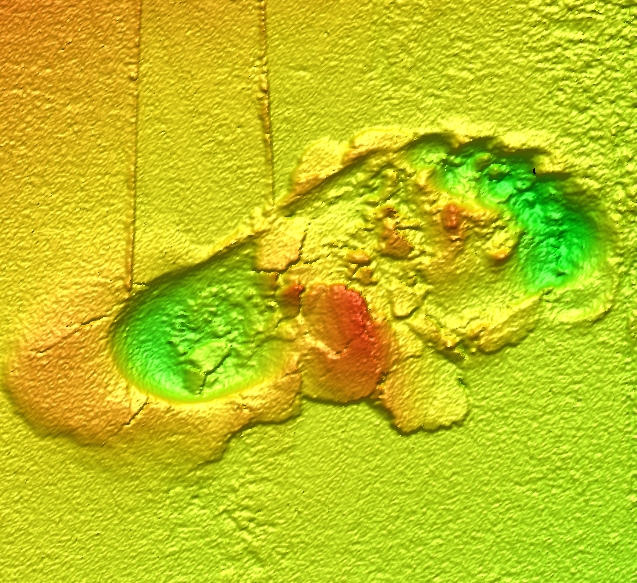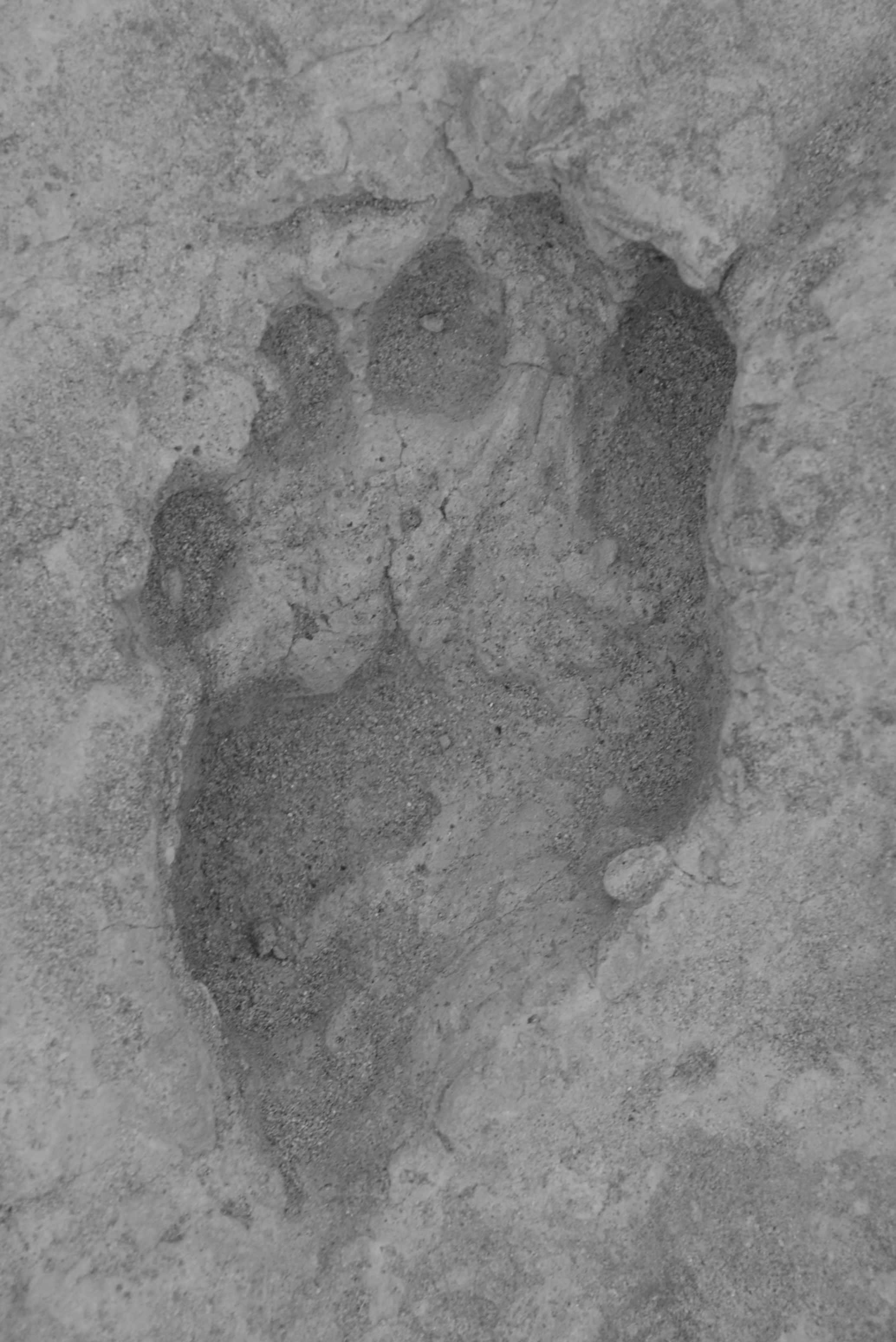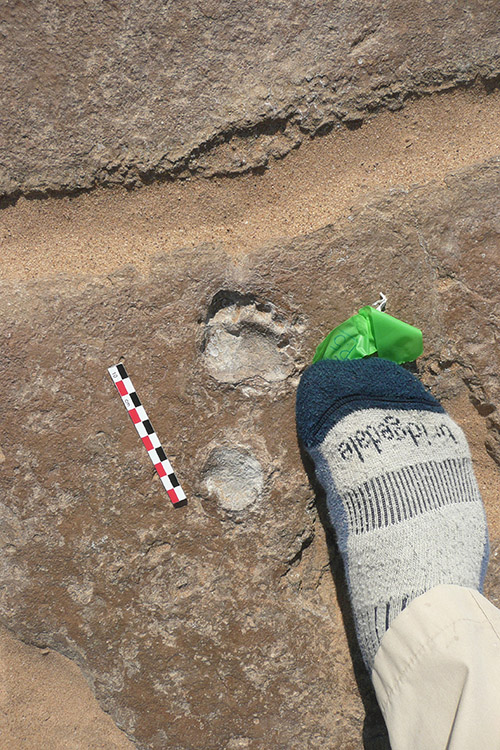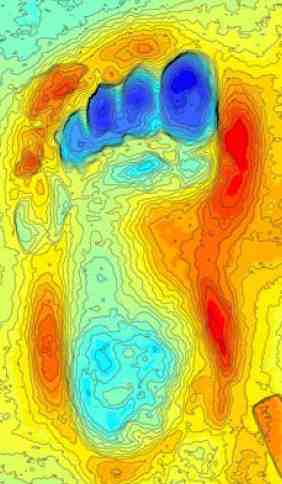

Footprint Data Archive
Welcome to the Bournemouth Fossil Footprint Archive.
Here you can access a range of footprint data collected over the last five years and specifically as part of a Natural Environment Research Grant [NE/HOO4211/1] held jointly between Bournemouth University (Professor Matthew Bennett) and Liverpool University (Professor Robin Crompton).
Power of the Print
Watch couples dance, children play in the park, or able-bodied athletes perform and you see the foot in action, an amazing machine. Just twenty six bones sheathed in skin and sinew, with muscles that can propel you forward, backwards, up and down, allowing you to twist, turn, balance and control your speed with precision. Yet despite over a hundred years of research our understanding of the foot remains rudimentary and knowledge of how our ancient ancestors walked a subject of conjecture and controversy.
A key part of being ‘human’ is the way in which we walk – upright and on two legs (bipedal). The development of bipedal locomotion was a critical stage in human evolution, as was the later transition from early habitual bipeds such as Australopithecus afarensis made famous by the skeleton ‘Lucy’ to modern endurance walkers and runners. The ability to walk efficiently will have influenced our ancestor’s interaction with the landscape. A direct result was increased home range, which allowed for long-range tracking of prey and access to the best sources of stone tool raw material. Further, the capacity or extensive mental mapping of the landscape allowed for further migration and eventually global migration.
For a variety of taphonomic reasons, fossil foot bones are rarely found associated with skeletons of known human species. Small bones scatter easily once released from soft-tissue, are readily displaced and chewed by scavenging carnivores, all of which explains their poor preservation prior to the start of burial practices. But in truth, fossil foot bones rarely give an unambiguous indication of the way our early ancestors walked, since the bones of the foot act through a series of complicated soft tissues which are rarely preserved and, therefore, the bones interact only remotely with the ground. This interaction is also mediated through the sedimentary properties of the substrate. The premise of our research is that human footprints provide an alternative record to foot bones of our ancestor’s feet and gait; formed as they walked across soft-ground leaving a record of ‘fossilised motion.’ The critical question is how do prints record the forces applied to the ground by the print maker and what can these forces tell us about the way in which that individual walked? Just as the foot meets the ground such problems involve the convergence of biomechanics and geology.


Data Archive
In the spirit of Open Data Access the footprint scans collected by the research team over the last few years are made available for scientific research and as part of our commitment to public engagement. All we ask is that the source of the data is acknowledged to Professor Matthew Bennett, Bournemouth University and to the NERC grant [NE/HOO4211/1].
On this site you will find a directory for each of the field sites investigated by the research team, as well as modern data from various laboratory and field simulations. Scans of individual footprints are an ASCII format, each of which contains the X, Y and Z for a digital elevation model. In most cases there is a site map in PDF format providing a key to the prints and file names. In some cases jpeg thumb nails of the scans are also provided. Most directories contain a PDF text file of additional information detailing the equipment used, collection methods, and precision/accuracy of the data, along with any available academic references. Any queries please contact mbennett@bournemouth.ac.uk. Data will be added progressively over the next 6 to 9 months.




Public Engagement
In order to make the data accessible to those without access to three-dimensional data visualisation software, our own Foot Processor and Foot Viewer software packages are available to download. The software runs in Mathworks Runtime Compiler 7.11 which can be downloaded freely from here. The Foot Processor was written for the research team by Dr Marcin Budka (Bournemouth University) and allows one to visualise XYZ files, convert them to CSV format, edit and crop the files, produce simple contour maps and make basic landmark based measurements. The Foot Processor manual and Foot Viewer manual are available for download.
In the Public Engagement directory you will also find details on some simple experiment and exercises that you can do with the data as class room projects.